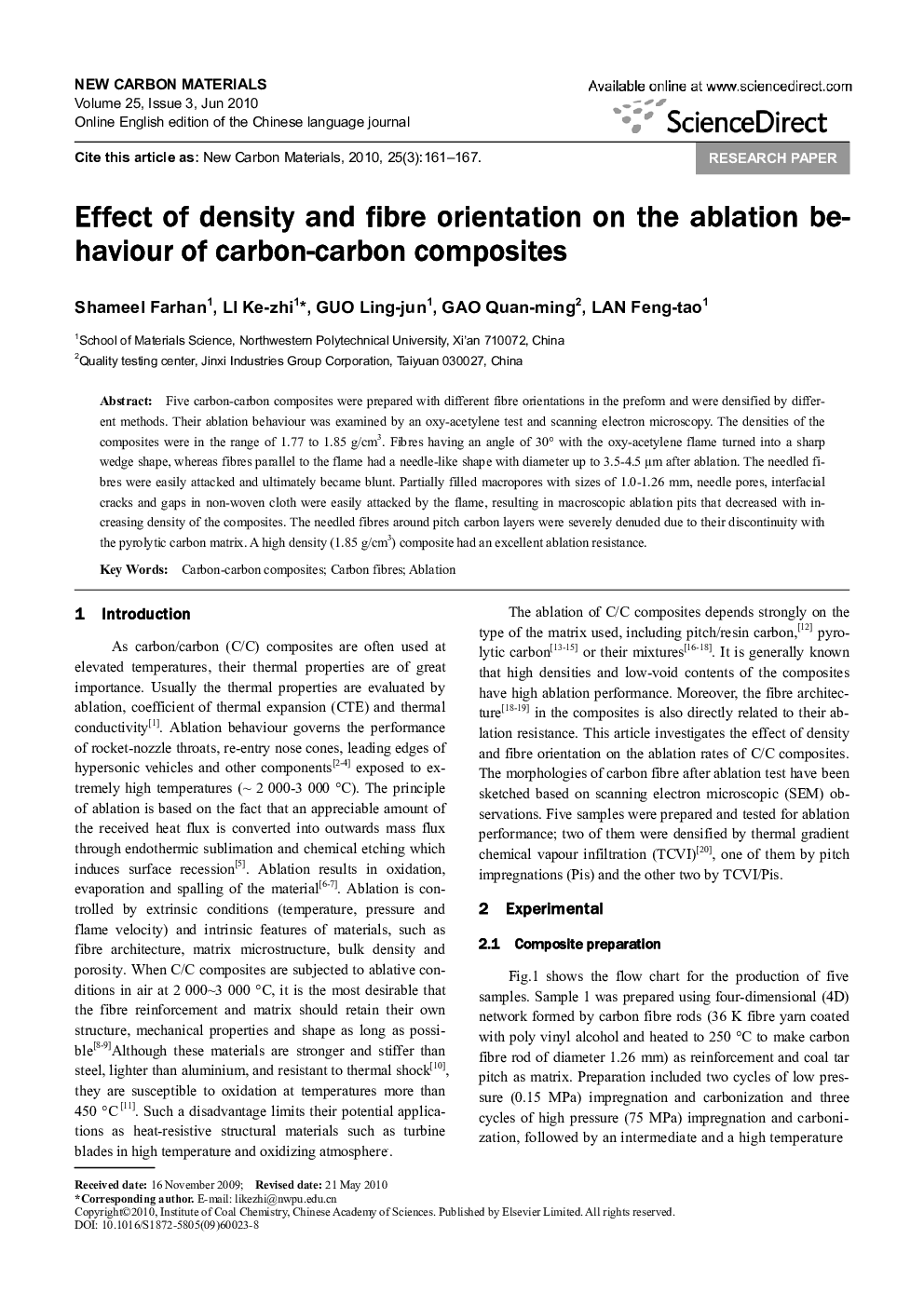| Article ID | Journal | Published Year | Pages | File Type |
|---|---|---|---|---|
| 1558527 | New Carbon Materials | 2010 | 6 Pages |
Abstract
Five carbon-carbon composites were prepared with different fibre orientations in the preform and were densified by different methods. Their ablation behaviour was examined by an oxy-acetylene test and scanning electron microscopy. The densities of the composites were in the range of 1.77 to 1.85 g/cm3. Fibres having an angle of 30° with the oxy-acetylene flame turned into a sharp wedge shape, whereas fibres parallel to the flame had a needle-like shape with diameter up to 3.5-4.5 μm after ablation. The needled fibres were easily attacked and ultimately became blunt. Partially filled macropores with sizes of 1.0-1.26 mm, needle pores, interfacial cracks and gaps in non-woven cloth were easily attacked by the flame, resulting in macroscopic ablation pits that decreased with increasing density of the composites. The needled fibres around pitch carbon layers were severely denuded due to their discontinuity with the pyrolytic carbon matrix. A high density (1.85 g/cm3) composite had an excellent ablation resistance.
Related Topics
Physical Sciences and Engineering
Materials Science
Materials Chemistry
Authors
Shameel Farhan, Ke-zhi LI, Ling-jun GUO, Quan-ming GAO, Feng-tao LAN,
